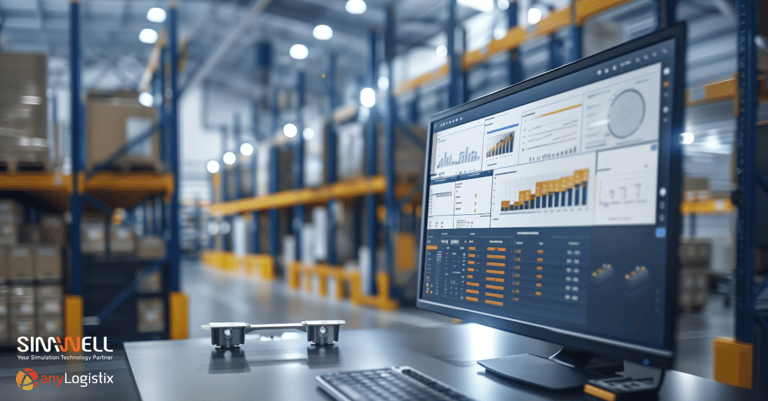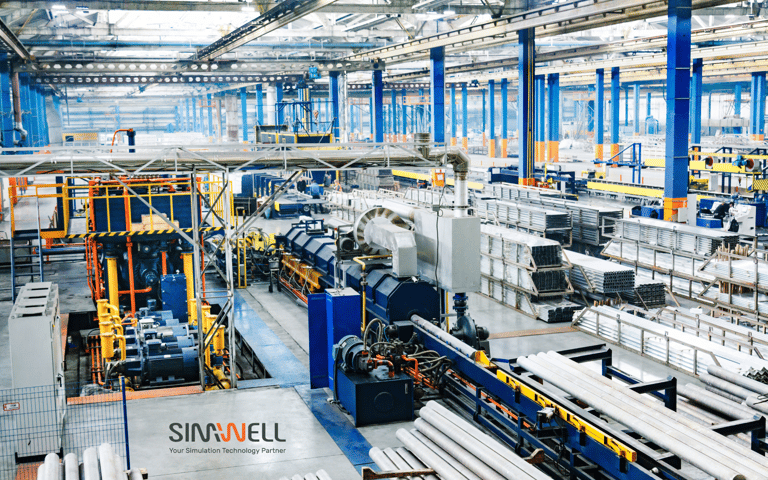
Modeling technology can be complex, yet fascinating—especially when different methods solve customer problems. But what are your options? Today, let’s demystify three critical technologies: artificial intelligence (AI), mathematical optimization, and simulation—including discrete event simulation (DES) and agent-based modeling (ABM).
AI takes precedence for the public these days, convincing newcomers that it’s superior for modeling problems. But in reality, AI, optimization, and simulation shine for different types of challenges. Let’s explore the benefits and use cases for these common modeling and simulation tools and how you can choose based on your needs. We will also explore how these technologies can be combined to offer powerful solutions.
Artificial Intelligence (AI)
AI involves creating algorithms and computational systems to perform tasks that typically require human intelligence. These tasks include learning, reasoning, and self-correction.
Different types of AI technologies serve various purposes:
- Machine Learning: Learns patterns from historical labelled data and can generalize and make predictions on new data. It is widely used in regression as well as classification problems.
- Deep Learning: A Machine learning technique where multi-layer neural networks are used as powerful function approximators.
- Reinforcement Learning: Learns optimal policies or strategies by interacting with the environment via set of predefined actions and getting feedback on these actions as a new system state and reward.
- Unsupervised Learning: Learns patterns from data where no labels are provided. Clustering algorithms and dimensionality reduction algorithms fall in this category.
AI Technology Applications
AI technologies vary in complexity. Machine learning models can make predictions based on historical data, while neural networks are capable of image recognition, natural language processing, and more.
Example: An organization that manually inputs thousands of invoices in an ERP every year can train an AI algorithm to recognize invoice information to automatically input into the system.
Operations and logistics generate a substantial amount of data, which can be effectively used to improve decision-making processes. AI can leverage this data to enhance manufacturing, warehousing, and supply chain management.
Mathematical Optimization
Mathematical optimization is a branch of applied mathematics used to find the best solution from a set of available alternatives under a given set of constraints. This is crucial in logistics and operations where resources are limited and need to be allocated efficiently.
Optimization models need clear definitions for three key elements:
- An objective for what to maximize or minimize, such as profit, cost, time, or distance.
- Constraints that must be adhered to, like budget limits or resource capacities.
- Decision variables that include all choices you can control.
Mathematical Optimization Applications
This method is extremely powerful for planning and scheduling, helping businesses make strategic decisions aligned with their goals. SimWell’s MohOpt Route Optimization Engine is a prime example, alongside others that include production scheduling, HR scheduling, and train scheduling.
Optimization is regularly used for long-term strategic decision-making such as supply chain network optimization and inventory optimization, in addition to mid-term tactical decisions such as staffing and short-term operation decisions such as blending different grades of coal in power plants or cutting plan in paper industry.
Usually, optimization model considers a deterministic world without considering the variability or the stochastic nature of the real world. But as Mike Tyson observed, “Everyone has a plan until they get punched in the face.” The world is not deterministic—process times vary, equipment breaks down, and traffic slows travel. You must be agile and ready to reoptimize on the fly to take full advantage of mathematical optimization.
Simulation
Simulation creates virtual representations of real-world processes or systems. It enables organizations to analyse the impact of different strategies in a risk-free environment. If you need to visualize complex systems with variability, what-if scenarios, or longer time horizons, simulation can support you. An advanced version of Simulation model which receives data from real world on demand and uses this information as its initial state is called a Digital Twin.
Simulation Applications
Modeling and simulation are ideal for a range of use cases, such as CAPEX investments or system debottlenecking.
- CAPEX investments: For evaluating large capital expenditures. We can quantify the impact of investment by checking it in a virtual world.
- System debottlenecking: Identifying and alleviating constraints in processes by trying out various options in virtual environment.
Most Widely used types of Simulation modelling paradigms:
Discrete Event Simulation (DES) models systems where the operation occurs as a sequence of discrete events in time. Each event marks a change in the system state.
Example: In a manufacturing plant, events could include material arrival, machine cycle completion, or product departure.
Agent-Based Modeling (ABM) models agent dynamics—autonomous entities such as vehicles, customers, or employees—and their interactions within a defined system. It’s useful in logistics for studying complex decision-making processes and operational interactions.
Example: You can model forklifts in a warehouse with both DES and ABM. If the forklifts operate with simple FIFO rules, you can opt for DES. However, if they’re intelligent agents making complex decisions, ABM is ideal.
Combining Technologies: AI + Optimization, AI + Simulation
Simulation, Optimization & AI technologies do not compete with one another but are suited to different problems. Combining these technologies can solve complex problems by leveraging their respective strengths.
Simulation + AI:
- AI agents can be trained in a simulation environment to learn policies and make optimal decisions. Once the AI agent has learned the strategies, they be deployed to make decisions in the real world
- Example: In a Consumer goods supply chain AI agent can manage the stocks in warehouses instead of a static inventory policy. These agents can monitor stock levels and consider the demand and demand variation, production plan and any disruptions and suggest the best time to place replenishment order as well as the quantity of replenishment order in order to maximize service level and minimize the inventory carrying costs.
Simulation + Optimization:
- Once a simulation model is developed, we can use it for optimization. We still need to define the objective function, the constraints or requirements and the decision variables in our control. It is recommended to also define the range of values that the variables can take. Then the optimization layer can use the simulation model like a black box and find the best set of values for decision variables. In this way our optimization approach can also consider the stochastic nature of the real world.
- Example: What is the ideal number of assets such as different types of forklifts in a warehouse such that we have highest throughput.
Choose the Right Tool for Your Modeling and Simulation Needs
AI, Mathematical optimization and Simulation technologies do not compete with one another but rather complement one another. But what’s really beneficial is that you can combine these techniques to solve complex problems. Using a holistic approach allows decision-makers to visualize the impacts of their choices in a simulated environment before implementation, reducing risks in real-world execution. By leveraging the strengths of each technology, logistics and operations can achieve precision and adaptability to become more responsive.
Integrating Solutions into Your Existing Tech Infrastructure
SimWell provides tailored solutions using these technologies, helping clients improve operational efficiency, reduce costs, or enhance decision-making—and gain a competitive edge. The secret is to understand what aligns with your business challenges. Check out an example of how AI and simulation can work together to solve advanced problems.
Not sure where to start? We'll help guide you through the noise. Get in touch to explore how modeling and simulation technologies can help your business.
About SimWell
SimWell Consulting and Technologies is a global company specializing simulation, optimization, and digital twin technology. Our core mission is to unlock simulation at scale. We empower leaders and operators to maximize their current resources, optimize their operations, and elevate their performance with simulation. We build models of our customers operation, test scenarios, and predict how it will perform in a risk-free environment.
With SimWell as your partner, your team will have the tools to make confident decisions, optimize your process, and press fast forward on your business.
Written by:
Amit Kumar, Director, India Operations at SimWell
OR send me a note at akumar@simwell.io








